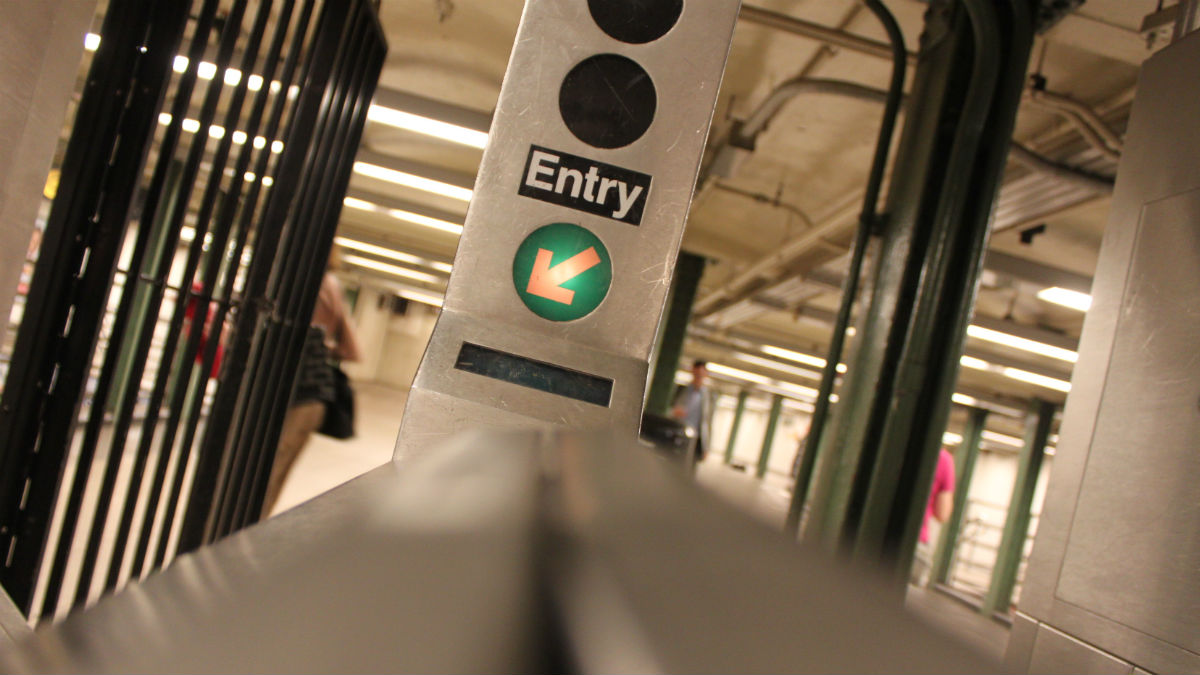Happy New Year from the MTA! You've got a few more months before they ask you for more cash.
The transit agency's board opted Wednesday to postpone fare hike hearings until at least late February, meaning the soonest MTA subway and bus fares, along with bridge tolls, could rise would be June.
Hikes typically begin in March each year, following a December vote. MTA Chairman and CEO Janno Lieber said Wednesday that fake hike hearings would be delayed to allow a subcommittee to study equity and other variables.
An MTA fare hike is likely unavoidable, with the cash-strapped transit agency still in dire post-pandemic straits, but y as the transit agency detailed the financial dire straits they find themselves in as a result of the pandemic.
Top transit officials showed MTA board members at a Nov. 30 hearing just how bad the deficit situation is -- like billion-bad -- and said it was expected to near $3 billion by 2026, according to MTA Chief Financial Officer Kevin Willens.
The reason for the crisis? Ridership still hasn't fully returned to pre-pandemic levels, sitting at only two-thirds of what it was in 2019 as of late November.
Get Tri-state area news delivered to your inbox. Sign up for NBC New York's News Headlines newsletter.
The office of New York State Comptroller Thomas DiNapoli has demanded to know how the MTA plans to save money and fund operations while trying to reduce COVID-driven budget gaps. The agency had a $15 billion federal bailout but spent at least two-thirds of that to stay afloat, according to the comptroller's office.
"That federal relief is not forever," DiNapoli said earlier this month. "Some of it is in the form of a loan that has to be paid back. And ridership has not come back."
The comptroller also warned that with government funding running out, and ridership still sagging, severe service cuts and fare hikes could be coming in the future.
The MTA, in response to the comptroller's report, said it was "committed to maintaining robust service for our riders, and this report underscores that solving post-pandemic budget gaps with fare increases and service cuts alone is not an attractive option."
As for how to save costs, Lieber has said that the service cuts DiNapoli suggested weren't on the table. The agency has, however, announced plans to adjust subway service on more than a dozen lines in 2023 to better reflect post-pandemic ridership. That means changes on weekends, weekdays and more. See the details.
If the losses can't be recouped through service cuts, fare hikes are the next option -- and riders aren't thrilled about it.
"It shouldn’t even be the fare it is now. They want more money, but we are not getting the service that we need! It’s just out of control," said rider Peggy Banks.
The state audit revealed that before the pandemic, subway and bus fares accounted for 42% of MTA revenue. Now, it says it's just 24%, which is only serving to fuel the $1.6 billion deficit, officials say.
DiNapoli's office says it would take a fare hike of 28% to ease the MTA's financial pain. An increase of that amount would raise the price of a single ride from $2.75 to $3.50.
Lieber, meanwhile, has recommended a more modest 5% fare hike, which would be about 15 cents more than riders pay now. He also said the fiscal cliff can be averted if federal state and local governments kick in more cash — to the tune of hundreds of millions of dollars.
"And if they also want to provide an answer that makes the fare hike unnecessary, we are all ears," Lieber has said.



